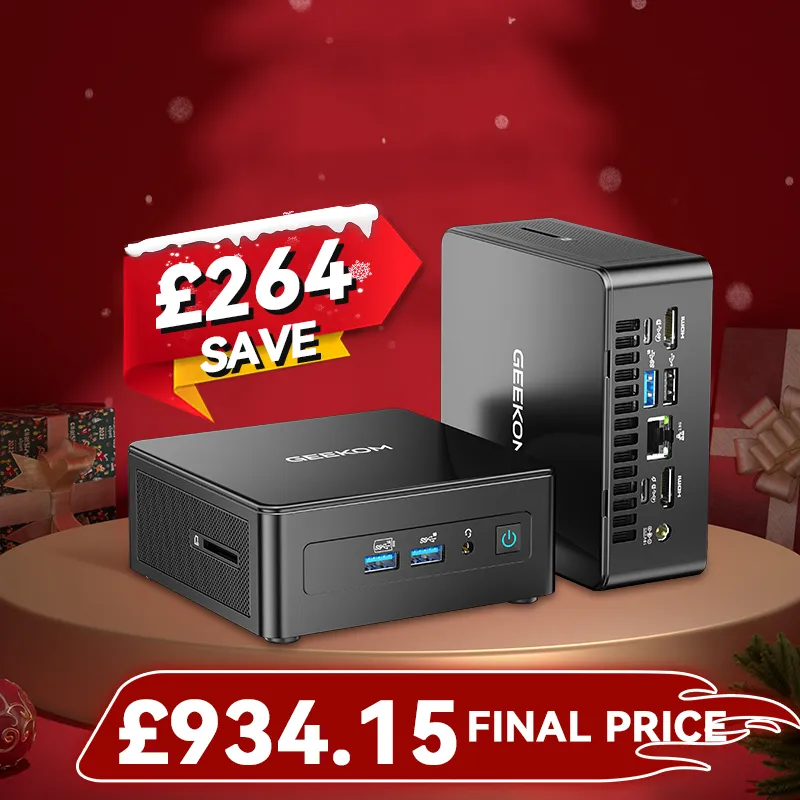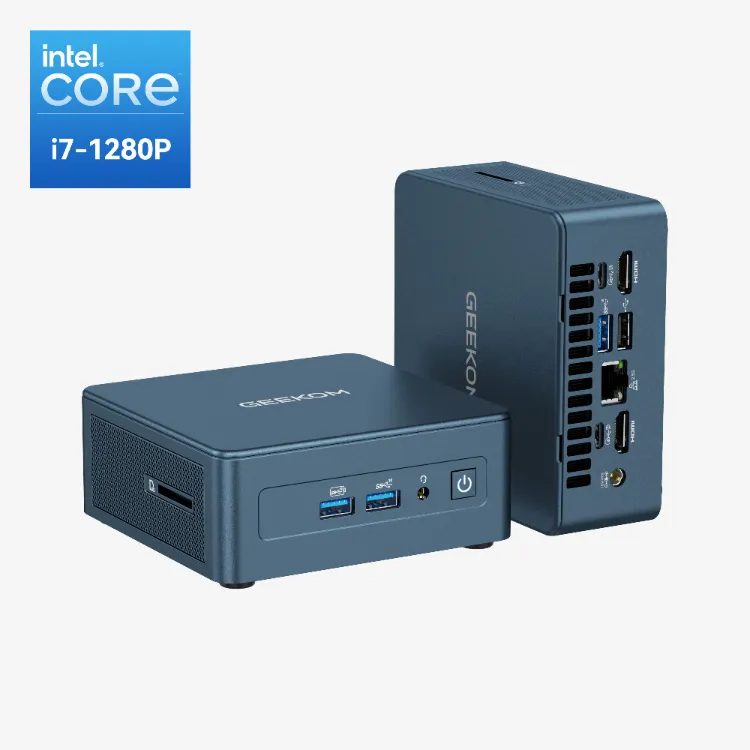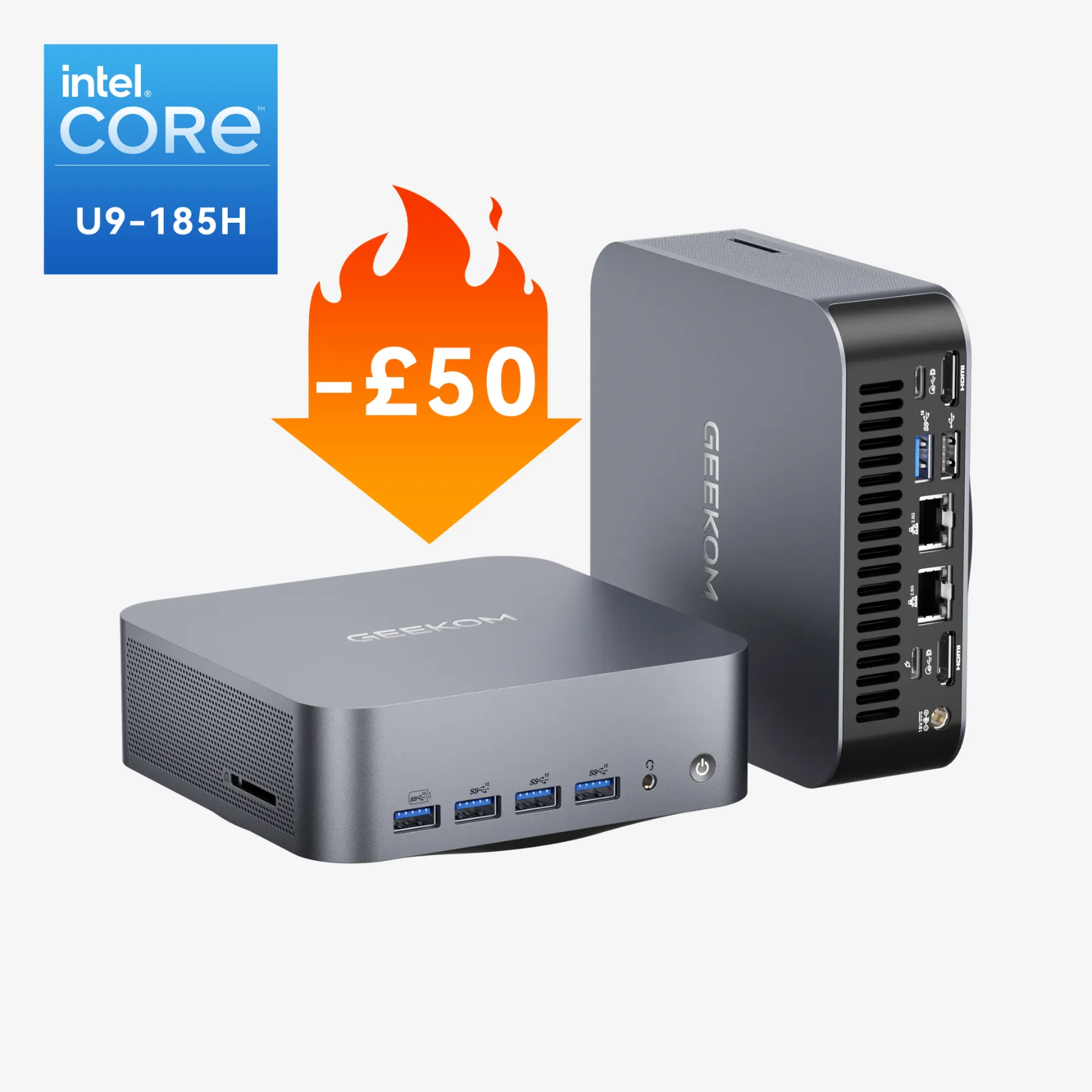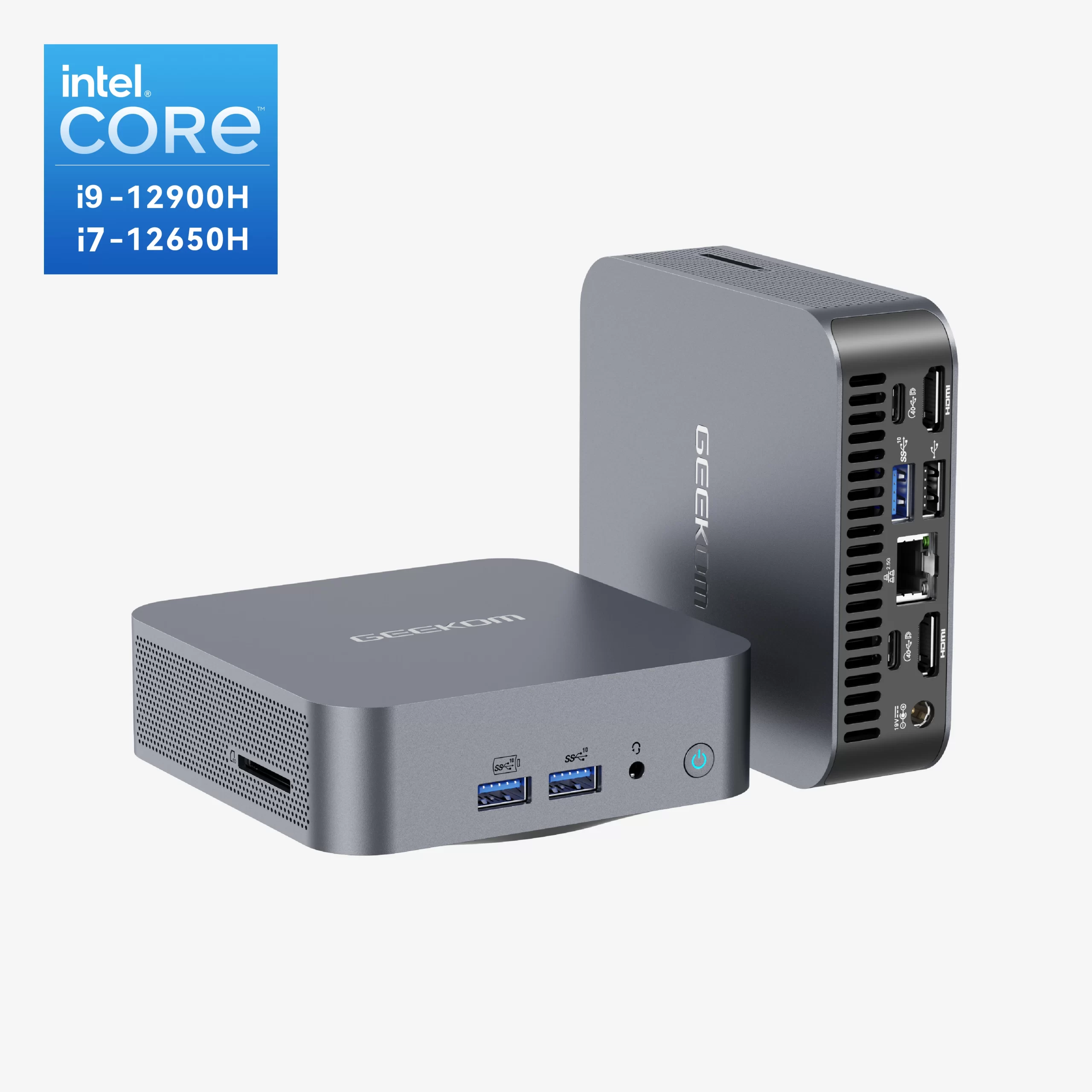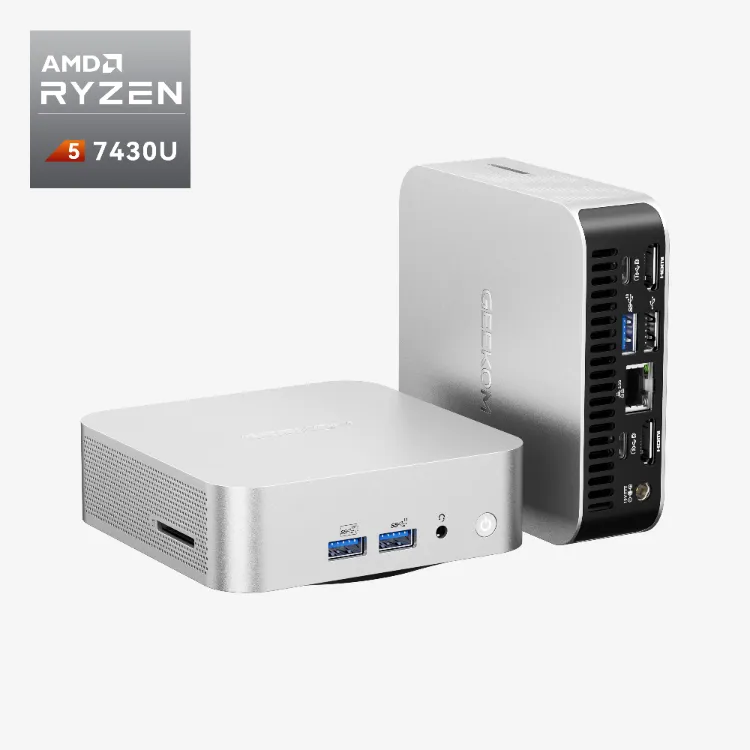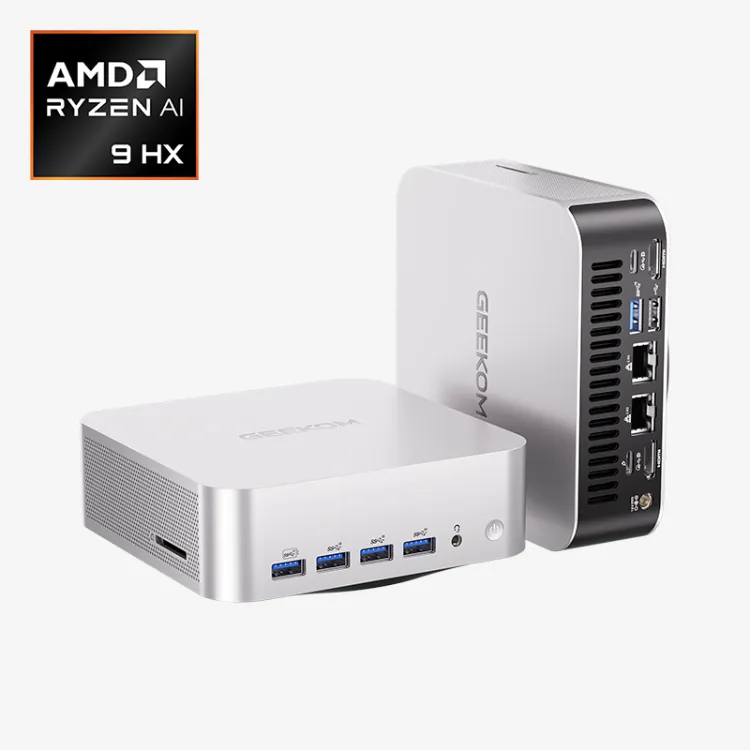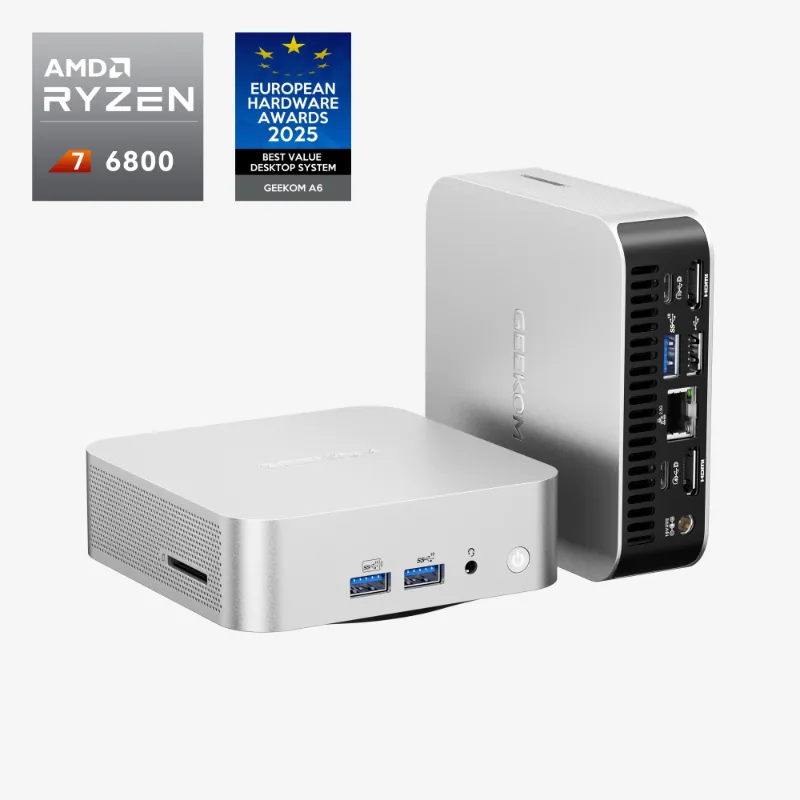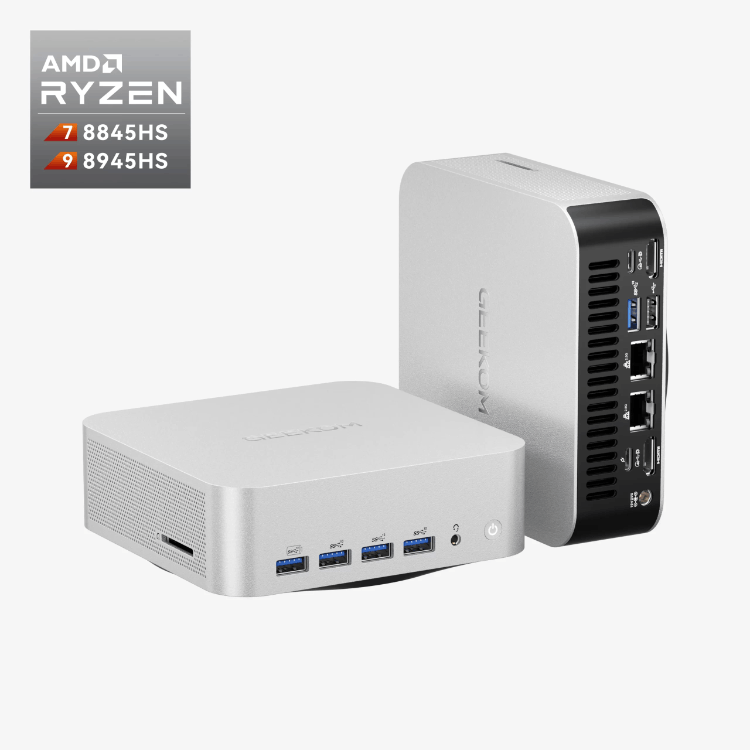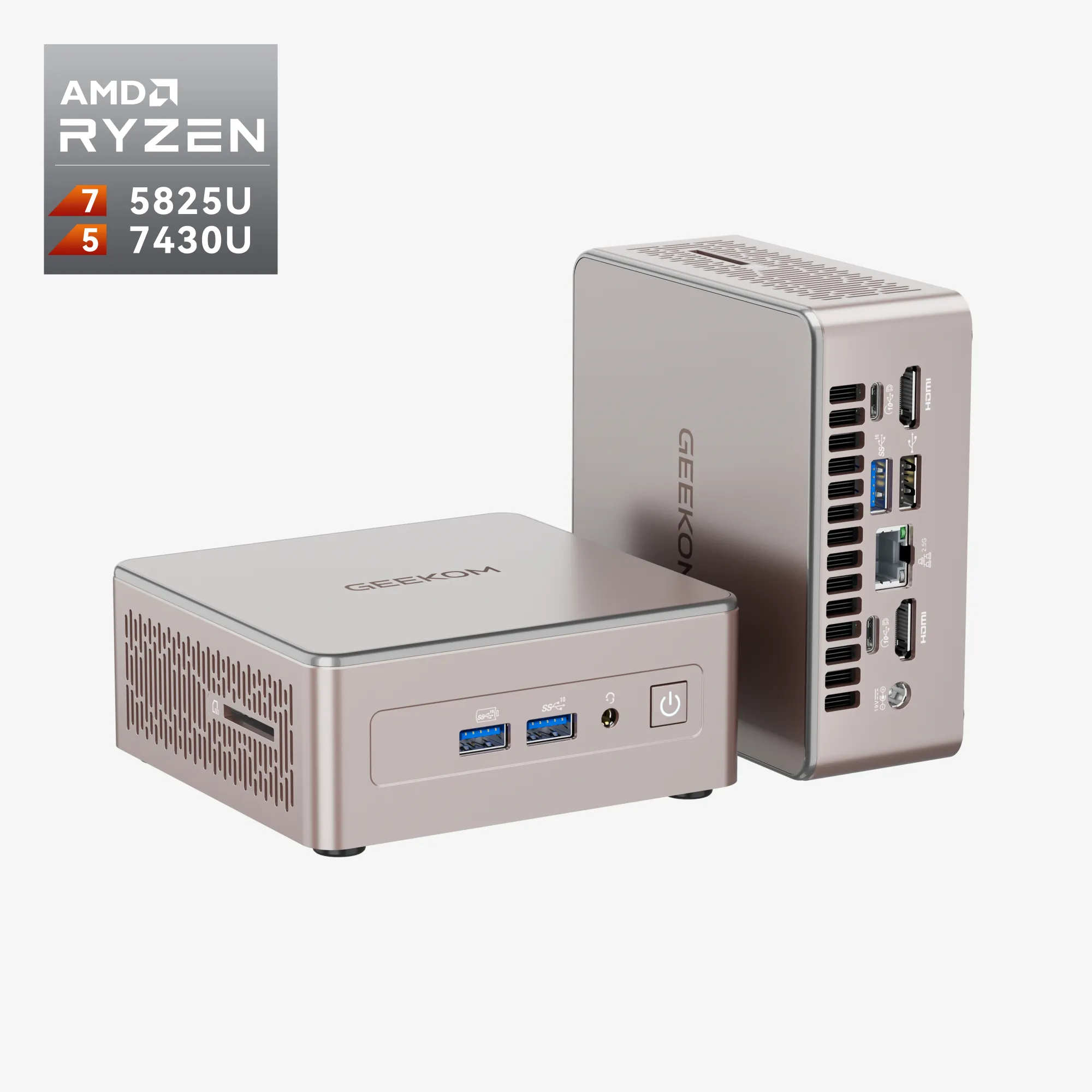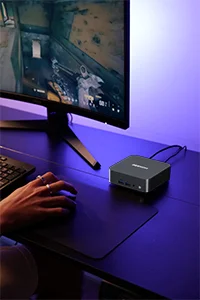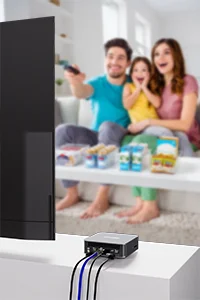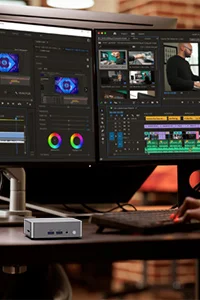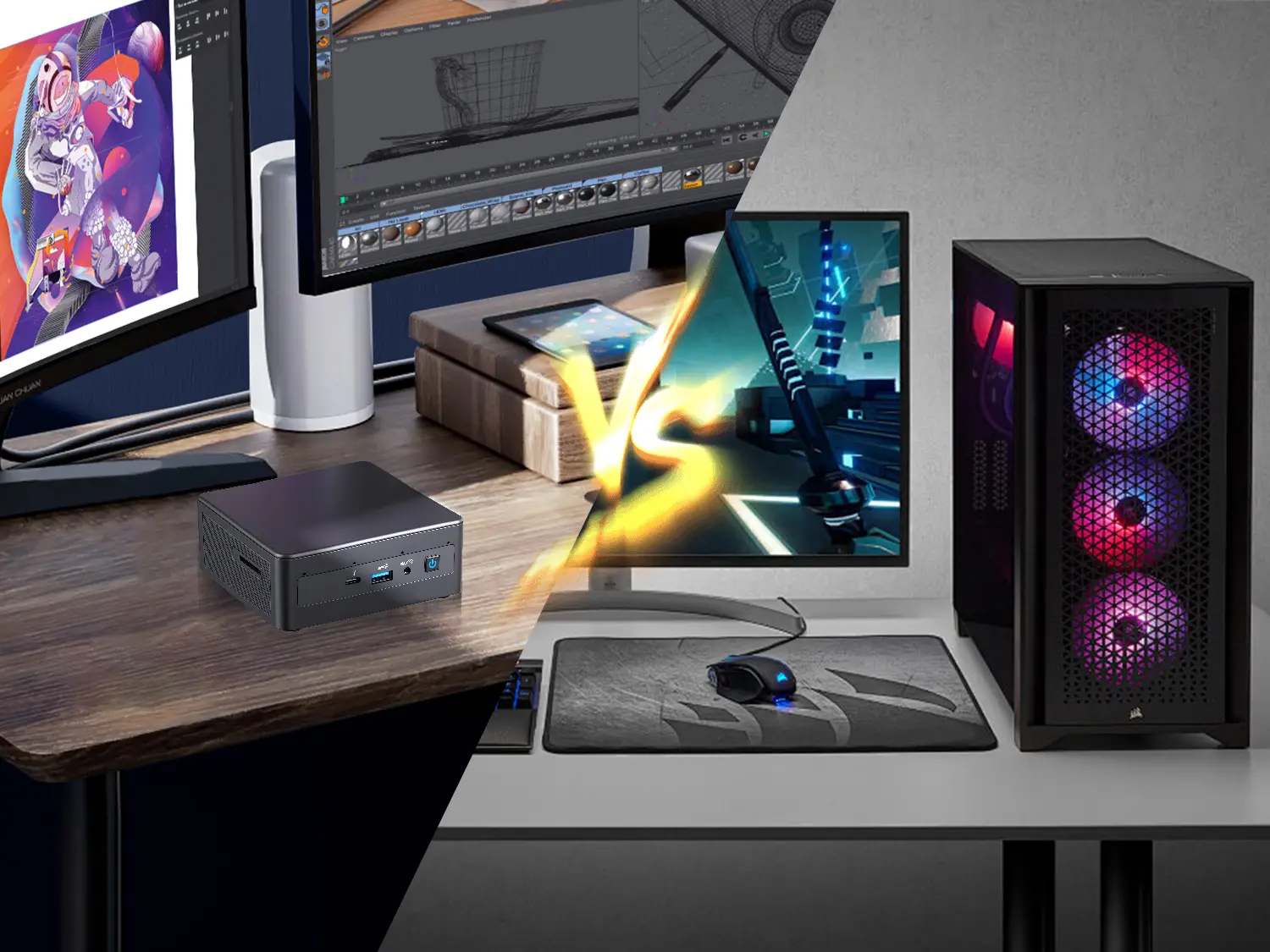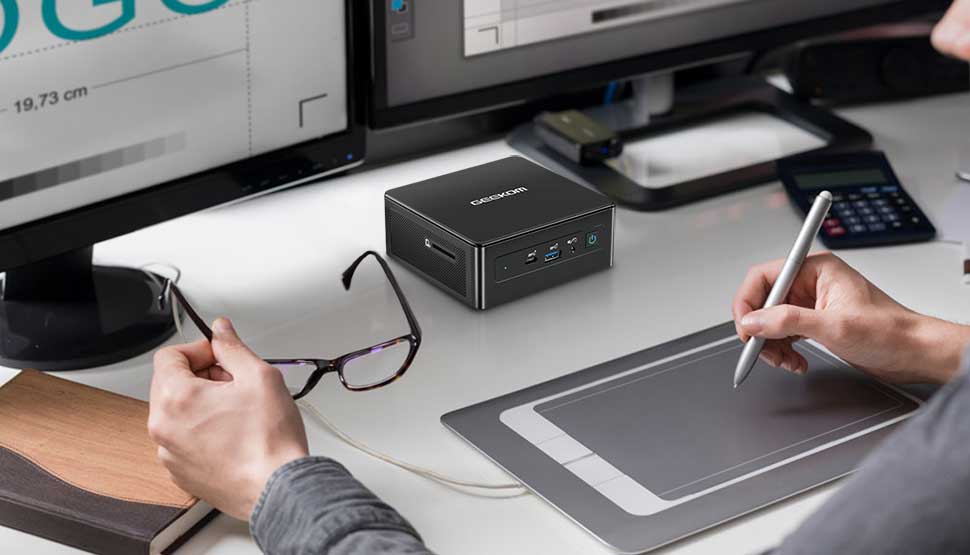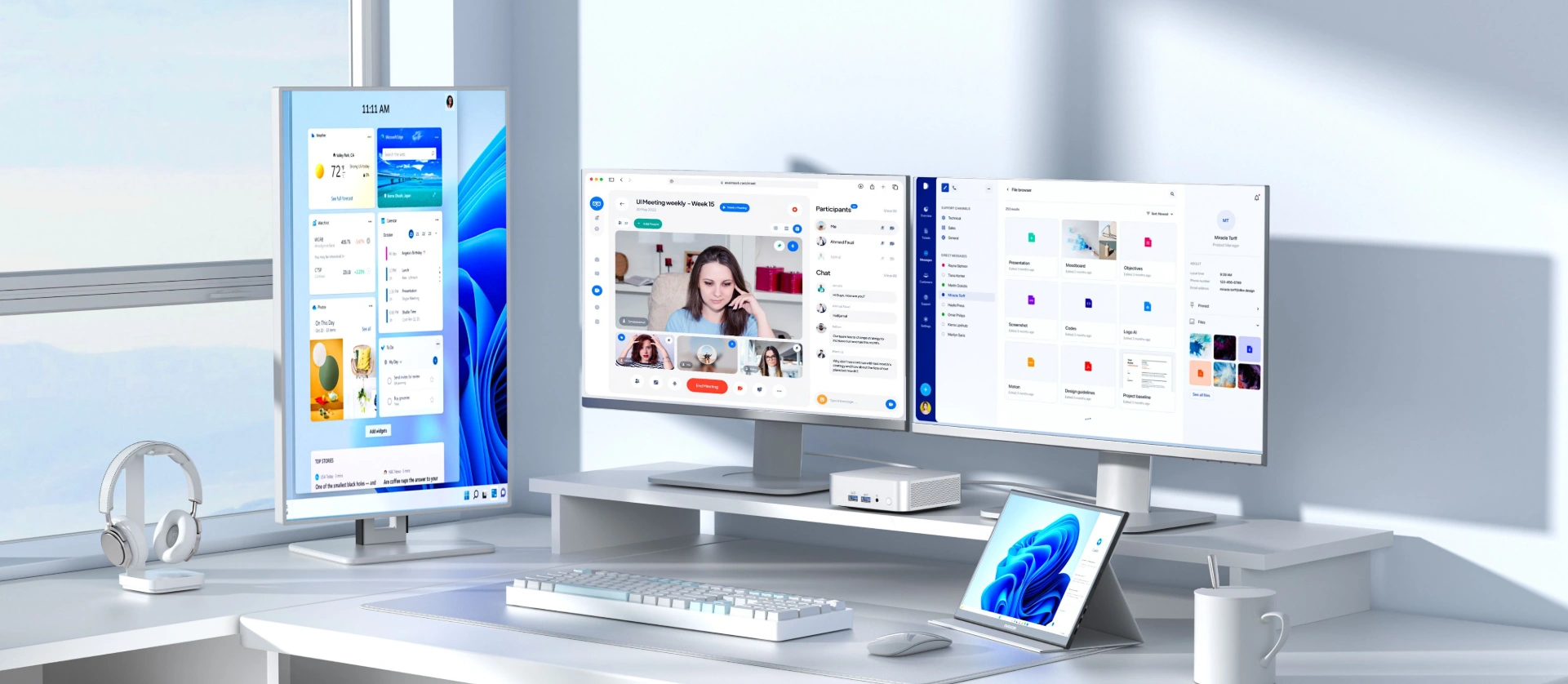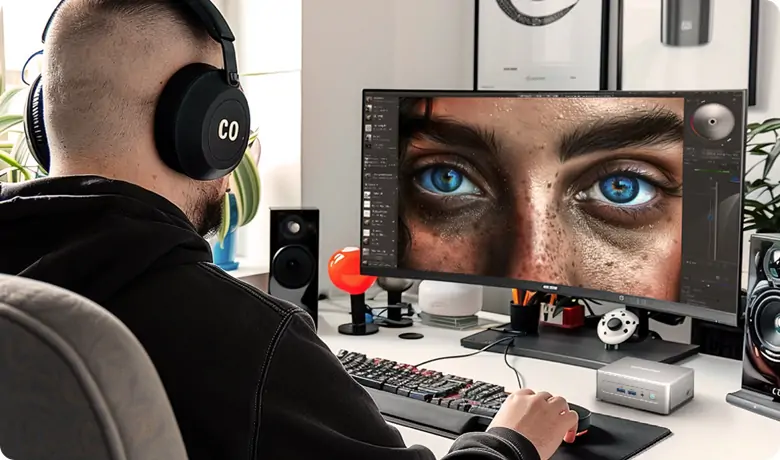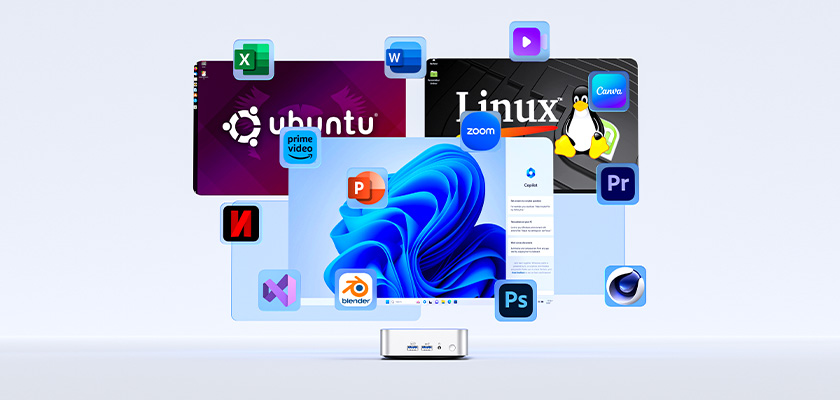Over the years, dating back to the invention of the standard desktop computer, there has been a consistent trend of computers getting progressively smaller. To fully understand the distinction between a standard desktop and a mini PC, let’s delve into what precisely characterizes a small desktop computer.
What Is a Mini PC?
First and foremost, it’s essential to clarify what a mini PC actually is. Essentially, a mini PC is an exceptionally small and compact desktop. It operates almost identically to a regular desktop, with the primary distinction being its significantly reduced size.
A mini desktop computer can be used both at home and in the office, catering to a diverse range of activities, from internet browsing, and email communication, to gaming, and video editing.
While mini PCs generally exhibit slightly lower speed than regular desktops, there are upgrade possibilities for working memory and SSD.
In terms of design, mini desktop PCs are notably more elegant, compact, and aesthetically appealing compared to their regular desktop counterparts.
What Is Inside a Mini PC?
Internally, the components are quite similar to those of a regular desktop or laptop, excluding the screen and keyboard for obvious reasons.
In more concrete terms, a mini PC shares the same processor, components like a central processing unit, and a memory system. Most importantly, it possesses the same internal power, speed, and capabilities. This is achievable because a small desktop PC incorporates a motherboard, akin to a desktop, upon which the entire functionality of the mini PC relies.
Advantages of Mini PCs
Now that we’ve established the fundamentals of mini PCs, let’s highlight some of their most notable advantages:
- Space-Saving Capacity: Mini PCs are incredibly compact, making them ideal for environments where space is limited. They can easily fit behind other objects like a television or monitor.
- Versatility: Mini PCs offer a wide range of functions and features, including a webcam, Wi-Fi, and Bluetooth connections. They can be used for various activities such as email, professional tasks, gaming, and multimedia editing.
- Cost Moderation: Mini PCs are relatively budget-friendly compared to regular desktops or laptops, offering good quality at a lower cost.
- Energy-Saving Capacity: Mini PCs contribute to energy savings, consuming less power than regular desktops, even at full capacity. They are designed with a focus on portability, providing long-lasting battery life.
- Easy To Carry Around: Portable and lightweight, mini PCs are easy to carry, making them convenient for on-the-go use.
- Noise Reduction: Mini PCs often rely on passive cooling, reducing noise production compared to ventilator-based systems. This allows for a quiet working environment.
Conclusion
It’s important to note that both regular desktops and micro PCs have their respective advantages and disadvantages.
However, if you’re seeking a more economical alternative to a standard desktop without compromising on performance and quality, a mini desktop computer is a worthy consideration. The differences are hardly noticeable, particularly where it matters most!


